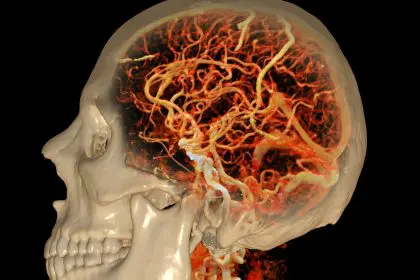Important Medical Disclaimer: This article is for educational purposes only and should not replace professional medical advice. Anyone experiencing persistent shoulder pain or other concerning symptoms should seek immediate medical attention. Shoulder pain accompanied by chest pain, difficulty breathing, or other severe symptoms requires emergency medical care.
Shoulder pain is commonly dismissed as a minor injury or muscle strain, but this seemingly innocent symptom can sometimes signal the beginning of serious, potentially life-threatening conditions. While most shoulder pain results from benign causes like muscle tension or minor injuries, certain patterns of shoulder discomfort may indicate underlying diseases that require urgent medical attention.
The shoulder’s complex anatomy and extensive nerve connections make it a common site for referred pain from other parts of the body. This means that serious conditions affecting internal organs may first manifest as shoulder pain, often leading to delayed diagnosis and treatment. Understanding which deadly diseases can begin with shoulder pain enables early recognition and potentially life-saving medical intervention.
Many individuals experiencing shoulder pain naturally assume it stems from physical activity, poor posture, or age-related wear and tear. However, certain characteristics of shoulder pain, particularly when accompanied by other symptoms, should prompt immediate medical evaluation to rule out serious underlying conditions.
Understanding referred pain patterns
Referred pain occurs when problems in internal organs are felt in different parts of the body, including the shoulder. This phenomenon happens because many organs share nerve pathways with the shoulder region, causing the brain to interpret pain signals as originating from the shoulder when they actually come from elsewhere.
The shoulder receives nerve connections from various parts of the body, including the heart, lungs, liver, gallbladder, and spleen. When these organs experience problems, pain signals may be transmitted through shared nerve pathways, resulting in shoulder discomfort that seems unrelated to the actual source of the problem.
This complexity makes shoulder pain particularly challenging to evaluate, as the discomfort may be the first and only symptom of a serious underlying condition. Understanding these patterns helps individuals recognize when shoulder pain warrants immediate medical attention rather than home treatment.
7 deadly diseases that begin with shoulder pain
1. Heart attack and cardiovascular emergencies
Heart attacks frequently begin with shoulder pain, particularly in the left shoulder, though both shoulders may be affected. This pain often occurs alongside chest discomfort, but in some cases, shoulder pain may be the primary or only symptom, especially in women, elderly individuals, and people with diabetes.
The shoulder pain associated with heart attacks typically feels different from musculoskeletal pain. It may be described as pressure, heaviness, or aching that doesn’t improve with rest or position changes. The pain may radiate from the chest to the shoulder or appear to originate in the shoulder itself.
Other warning signs that may accompany shoulder pain during a heart attack include shortness of breath, nausea, sweating, dizziness, or a sense of impending doom. The shoulder pain may be constant or come in waves, and it often worsens with physical activity or emotional stress.
2. Lung cancer and respiratory malignancies
Lung cancer, particularly tumors located in the upper portions of the lungs, can cause shoulder pain as an early symptom. This occurs when tumors press against nerves or other structures near the shoulder area, or when cancer spreads to nearby bones or tissues.
The shoulder pain from lung cancer often develops gradually and may be persistent, not improving with typical pain relief measures. It may be accompanied by a persistent cough, shortness of breath, unexplained weight loss, or fatigue, though these symptoms may not appear until later stages.
Pancoast tumors, a specific type of lung cancer that develops in the upper part of the lungs, commonly cause shoulder pain as their first symptom. This pain may be severe and may worsen over time, often affecting sleep and daily activities.
3. Aortic dissection and vascular emergencies
Aortic dissection, a potentially fatal condition where the main artery from the heart tears, can cause severe shoulder pain, particularly in the left shoulder. This medical emergency requires immediate treatment to prevent life-threatening complications.
The shoulder pain from aortic dissection is typically sudden and severe, often described as tearing or ripping pain that may radiate from the chest to the shoulder and back. The pain is usually constant and may be accompanied by differences in blood pressure between arms, difficulty breathing, or neurological symptoms.
Other vascular emergencies, such as pulmonary embolism or severe hypertensive crises, may also present with shoulder pain alongside other serious symptoms. These conditions require immediate medical intervention to prevent fatal outcomes.
4. Gallbladder disease and biliary emergencies
Serious gallbladder conditions, including gallbladder inflammation, severe gallstones, or gallbladder cancer, frequently cause right shoulder pain. This pain results from irritation of the diaphragm, which shares nerve connections with the shoulder area.
The shoulder pain from gallbladder disease is typically felt in the right shoulder and may be accompanied by abdominal pain, nausea, vomiting, fever, or yellowing of the skin and eyes. The pain may worsen after eating fatty foods and may be severe enough to interfere with sleep.
Acute cholangitis, a serious infection of the bile ducts, can also cause right shoulder pain along with fever, chills, and jaundice. This condition can rapidly progress to life-threatening sepsis if not treated promptly.
5. Liver disease and hepatic complications
Serious liver conditions, including liver cancer, severe hepatitis, or liver abscesses, can cause right shoulder pain as the liver becomes enlarged or inflamed. The pain occurs because the liver capsule shares nerve connections with the shoulder area.
Liver-related shoulder pain is typically felt in the right shoulder and may be accompanied by abdominal swelling, yellowing of the skin and eyes, dark urine, pale stools, or unexplained fatigue. The pain may be constant or may worsen with movement or deep breathing.
Liver rupture, though rare, can cause severe right shoulder pain along with signs of internal bleeding, including dizziness, rapid heartbeat, and abdominal pain. This medical emergency requires immediate surgical intervention.
6. Spleen problems and splenic emergencies
Serious spleen conditions, including splenic rupture, enlarged spleen, or splenic infarction, can cause left shoulder pain. The spleen’s location under the left ribcage and its nerve connections make shoulder pain a common symptom of splenic problems.
Splenic rupture, which can occur after trauma or in people with enlarged spleens, causes severe left shoulder pain along with abdominal pain, dizziness, and signs of internal bleeding. This condition is life-threatening and requires emergency surgery.
Splenic infarction, where part of the spleen dies due to lack of blood flow, can also cause left shoulder pain along with abdominal pain, fever, and general illness. While less immediately life-threatening than rupture, this condition still requires prompt medical treatment.
7. Bone cancer and metastatic disease
Primary bone cancer affecting the shoulder area or cancer that has spread to the bones can cause persistent shoulder pain as an early symptom. This pain typically worsens over time and may not respond to typical pain relief measures.
The shoulder pain from bone cancer is often described as deep, aching pain that may be worse at night or at rest. It may be accompanied by swelling, weakness, or fractures that occur with minimal trauma. Other symptoms may include unexplained weight loss, fatigue, or fever.
Metastatic cancer from other parts of the body commonly spreads to bones, including those in the shoulder area. This can cause severe pain and may lead to pathological fractures that require immediate medical attention.
Recognizing emergency warning signs
Certain patterns of shoulder pain require immediate medical attention rather than waiting for routine appointments. Pain that is severe, sudden in onset, or accompanied by chest pain, difficulty breathing, or other serious symptoms should prompt immediate emergency care.
Shoulder pain that occurs with signs of infection, such as fever, chills, or redness, may indicate serious conditions requiring prompt antibiotic treatment or surgical intervention. Similarly, pain accompanied by neurological symptoms, such as numbness, weakness, or changes in coordination, warrants immediate evaluation.
Any shoulder pain that significantly worsens over a short period, doesn’t improve with rest, or interferes with sleep should be evaluated by healthcare providers to rule out serious underlying conditions.
When to seek immediate medical care
Shoulder pain accompanied by chest pain, shortness of breath, sweating, nausea, or dizziness requires immediate emergency medical attention, as these symptoms may indicate a heart attack or other cardiovascular emergency.
Sudden, severe shoulder pain that doesn’t improve with position changes or pain relief measures should be evaluated immediately, particularly if accompanied by other concerning symptoms such as difficulty breathing, abdominal pain, or signs of internal bleeding.
Any shoulder pain that occurs after trauma, particularly if accompanied by weakness, numbness, or inability to move the arm normally, requires prompt medical evaluation to rule out serious injuries.
The importance of early recognition
Early recognition of these warning signs can be life-saving, as many of these conditions respond better to treatment when caught early. Delays in diagnosis and treatment can lead to serious complications or fatal outcomes that might have been prevented with prompt medical intervention.
Healthcare providers have access to diagnostic tools and tests that can quickly identify or rule out serious conditions causing shoulder pain. These may include blood tests, imaging studies, or other specialized examinations that provide crucial information for diagnosis and treatment planning.
Supporting overall health awareness
Understanding these potential connections between shoulder pain and serious diseases empowers individuals to make informed decisions about when to seek medical care. This knowledge doesn’t mean that every shoulder pain indicates a deadly disease, but it helps people recognize when symptoms warrant immediate attention.
Maintaining regular healthcare relationships and communicating openly about symptoms helps ensure that concerning signs are properly evaluated and addressed. Healthcare providers can assess individual risk factors and determine appropriate levels of concern for various symptoms.
Moving forward with awareness
The goal of this information is not to create fear about shoulder pain but to promote awareness of when this common symptom may indicate serious underlying conditions. Most shoulder pain results from benign causes, but understanding these warning signs helps ensure that potentially life-threatening conditions are not overlooked.
Remember that this information is educational and cannot replace professional medical judgment. Anyone experiencing concerning shoulder pain, particularly when accompanied by other symptoms, should seek appropriate medical evaluation to ensure proper diagnosis and treatment.
The key to optimal health outcomes lies in balancing awareness of potential serious conditions with appropriate medical consultation when concerning symptoms develop. With proper medical care and attention to warning signs, many of these serious conditions can be diagnosed and treated effectively when caught early.


















